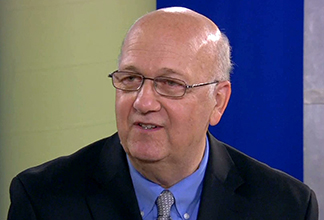By Emilio Perez Ibarguen

Emilio Perez Ibarguen
It’s hard to wrap my mind around the fact that my 12 weeks covering the environment at Bridge Michigan are over, but I’d like to think that’s partly due to how busy I was chasing interesting stories all over the state.
From the very start, this internship allowed me to dive headfirst into many different policy debates, research findings and human interest stories. I became adept at learning new concepts on the fly, asking informed questions to experts and translating my reporting into a compelling narrative for readers.
One of the most challenging yet rewarding parts of my internship was going through edits with my editors at Bridge. Most stories I filed involved a consistent back-and-forth, tweaking lines for readability and forcing me to justify every detail I include in my story. While the process could be demanding at times, it pushed me to be more thoughtful in how every line in a story should help the public better understand a topic. Continue reading



